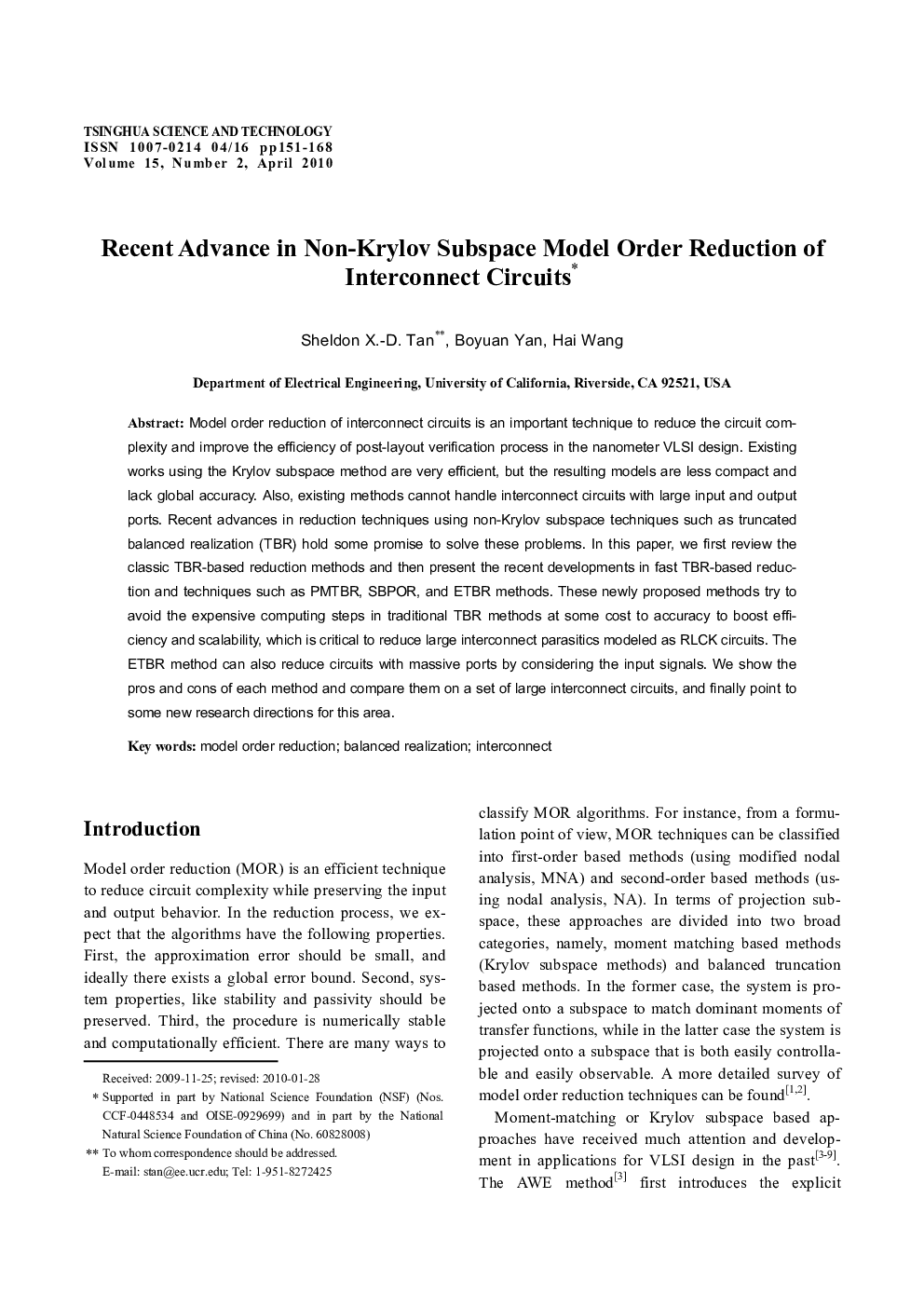| Article ID | Journal | Published Year | Pages | File Type |
|---|---|---|---|---|
| 865412 | Tsinghua Science & Technology | 2010 | 18 Pages |
Abstract
Model order reduction of interconnect circuits is an important technique to reduce the circuit complexity and improve the efficiency of post-layout verification process in the nanometer VLSI design. Existing works using the Krylov subspace method are very efficient, but the resulting models are less compact and lack global accuracy. Also, existing methods cannot handle interconnect circuits with large input and output ports. Recent advances in reduction techniques using non-Krylov subspace techniques such as truncated balanced realization (TBR) hold some promise to solve these problems. In this paper, we first review the classic TBR-based reduction methods and then present the recent developments in fast TBR-based reduction and techniques such as PMTBR, SBPOR, and ETBR methods. These newly proposed methods try to avoid the expensive computing steps in traditional TBR methods at some cost to accuracy to boost efficiency and scalability, which is critical to reduce large interconnect parasitics modeled as RLCK circuits. The ETBR method can also reduce circuits with massive ports by considering the input signals. We show the pros and cons of each method and compare them on a set of large interconnect circuits, and finally point to some new research directions for this area.
Related Topics
Physical Sciences and Engineering
Engineering
Engineering (General)
Authors
Sheldon X.-D. Tan, Boyuan Yan, Hai Wang,
